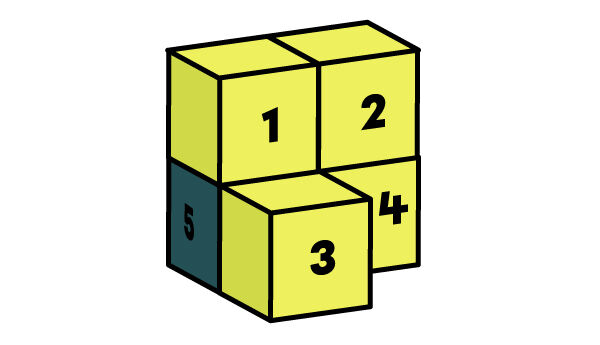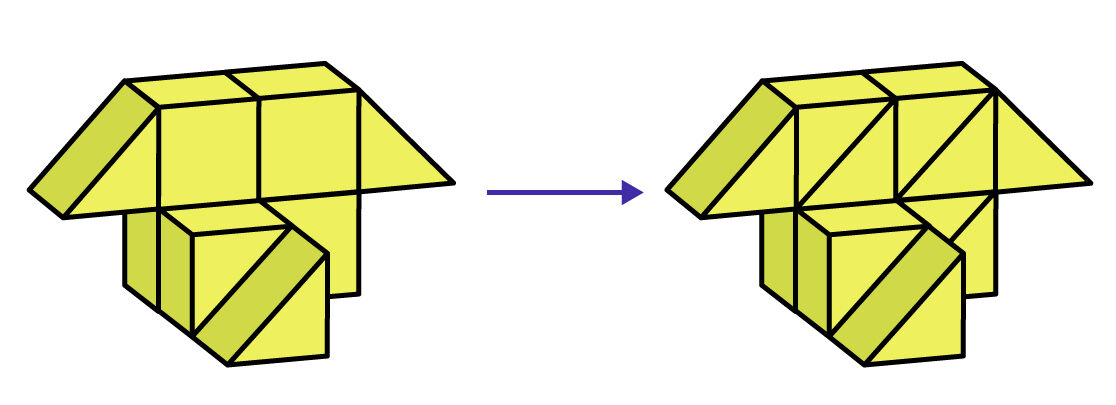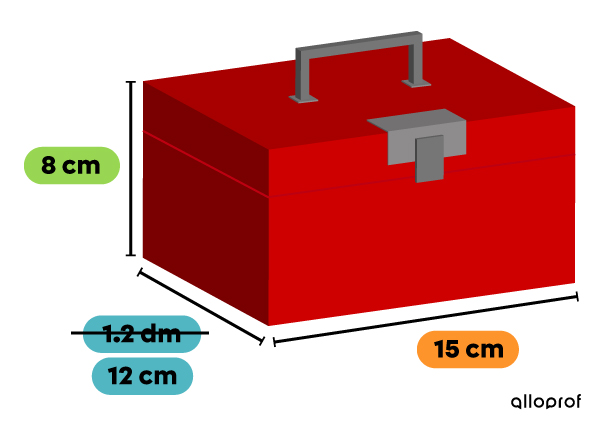Two half-cubes form a whole unit cube.

Follow these steps to calculate the volume of a solid.
-
If there are half cubes, join them to form whole unit cubes.
-
Count the total number of unit cubes, including those formed using the half cubes.
Remember to include the unit cubes that are not visible.
Example:
When looking at this image, I only see 4 unit cubes.

Another cube unit is placed under unit cube 1. It is visible when looking at the solid from the following perspective.

What is the volume of the following solid?

|
 |
|
|
The volume of this solid is 7 cubic units.
If a solid has an odd number of half cubes, calculate the volume of the figure in terms of half cubes. To do this, divide each unit cube into two half cubes.
Example: The volume of this solid is 13 half-cubic units.



When calculating volume, make sure that only one unit of measurement is used. If the units of measurements are different, convert all measurements before proceeding with the calculation.
Read the concept sheet Converting Units for Measuring Length to learn how.
Example:
Convert 1 m to dm to have a single unit of measurement.
Follow these steps to calculate the volume of a solid.
-
Verify that the measurements are given using the same unit. If not, convert them.
-
Multiply length by width by height to find the volume.
What is the volume of this chest?

|
 |
|
 |
The volume of this solid is 1 440 cm³.
